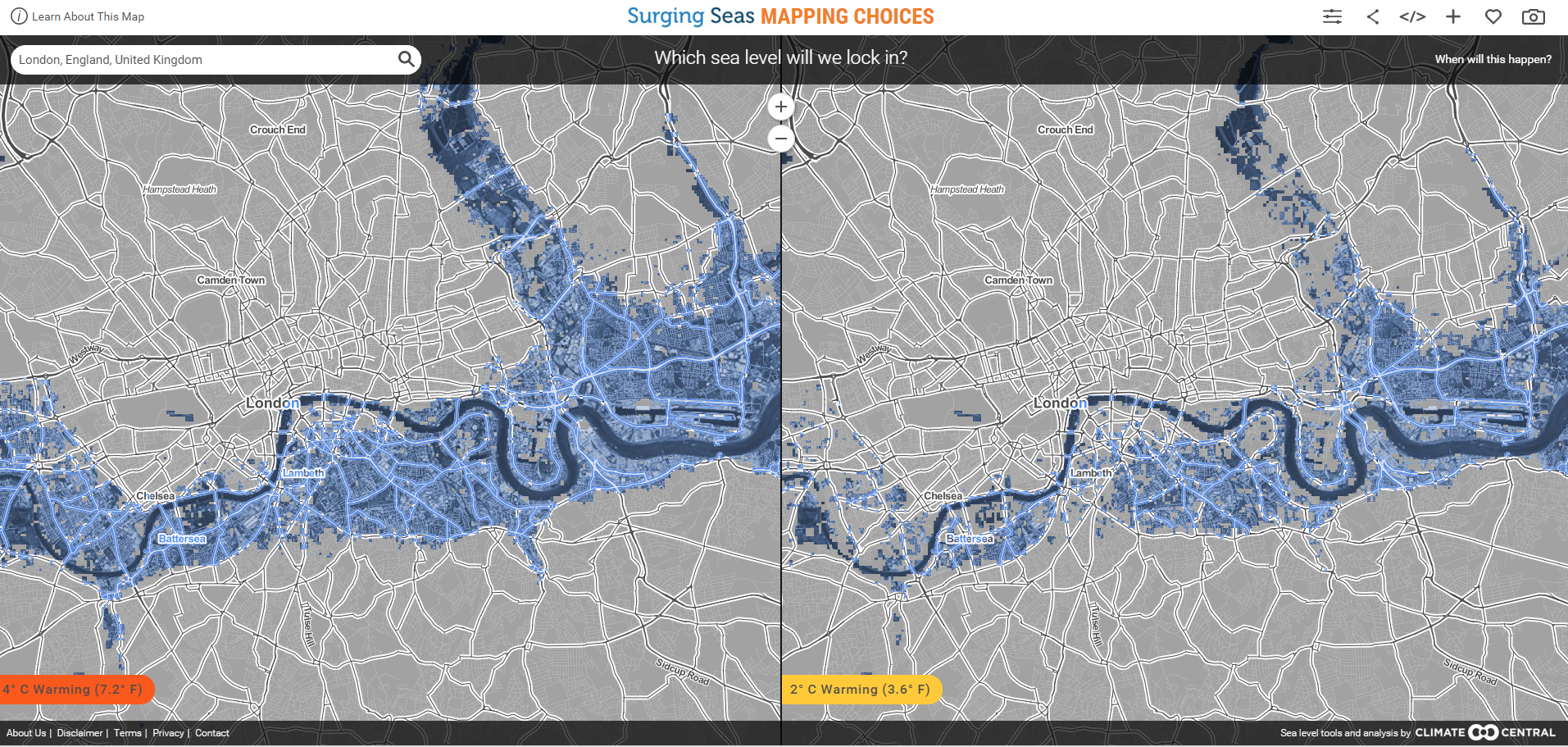How will your city be affected by rising sea levels?

Stay up to date:
Ocean
A new report from Climate Central has named the cities that are most at risk from rising sea levels, and compared the effects of temperature rises of 4 degrees and 2 degree Celsius.
The following maps were created as part of the Surging Seas analysis, and use Google Earth to map the effects of rising water levels on cities around the world. They are based on forecasts published in the academic journal Proceedings of the National Academy of Sciences of the USA.
On the left you can see the result of a rise of 4 degrees Celsius, and on the right the result of 2 degrees.
Shanghai, China
In Shanghai, 76% of the population are below the rise caused by a 4 degree increase in temperatures – some 22.4 million people. Even if we restrict warming to a 2 degree increase, this will still affect 11.6 million people.
London, UK
In London, 13% of the 2010 population live below the sea-level rise caused by a 4 degree increase in temperature.
Buenos Aires, Argentina
19% of Buenos Aires’s population live below the rise caused by a 4 degree increase – some 2.4 million people.
Cape Town, South Africa
A 4 degree rise in Cape Town, will see 9% of the population below the median locked-in sea-level rise.
New York, US
Nearly 3 million people in New York live below the rise caused by a 4 degree temperature increase.
The authors emphasize that these rises will not happen overnight, and will play out over centuries – however if we do not tackle global warming, they highlight that such rises may become unpreventable within a few decades.
Check out how your city will be affected here.
To keep up with the Agenda subscribe to our weekly newsletter.
Author: Joe Myers is a Digital Content Producer at Formative Content.
Image: A man looks towards his house in a slum. REUTERS/Navesh Chitrakar
Don't miss any update on this topic
Create a free account and access your personalized content collection with our latest publications and analyses.
License and Republishing
World Economic Forum articles may be republished in accordance with the Creative Commons Attribution-NonCommercial-NoDerivatives 4.0 International Public License, and in accordance with our Terms of Use.
The views expressed in this article are those of the author alone and not the World Economic Forum.
Related topics:
Forum Stories newsletter
Bringing you weekly curated insights and analysis on the global issues that matter.
More on Climate ActionSee all
Nigel Topping and Gonzalo Muñoz
May 28, 2025
Tom Crowfoot
May 27, 2025
Daniella Diaz Cely
May 27, 2025
Pascale Junker
May 26, 2025







